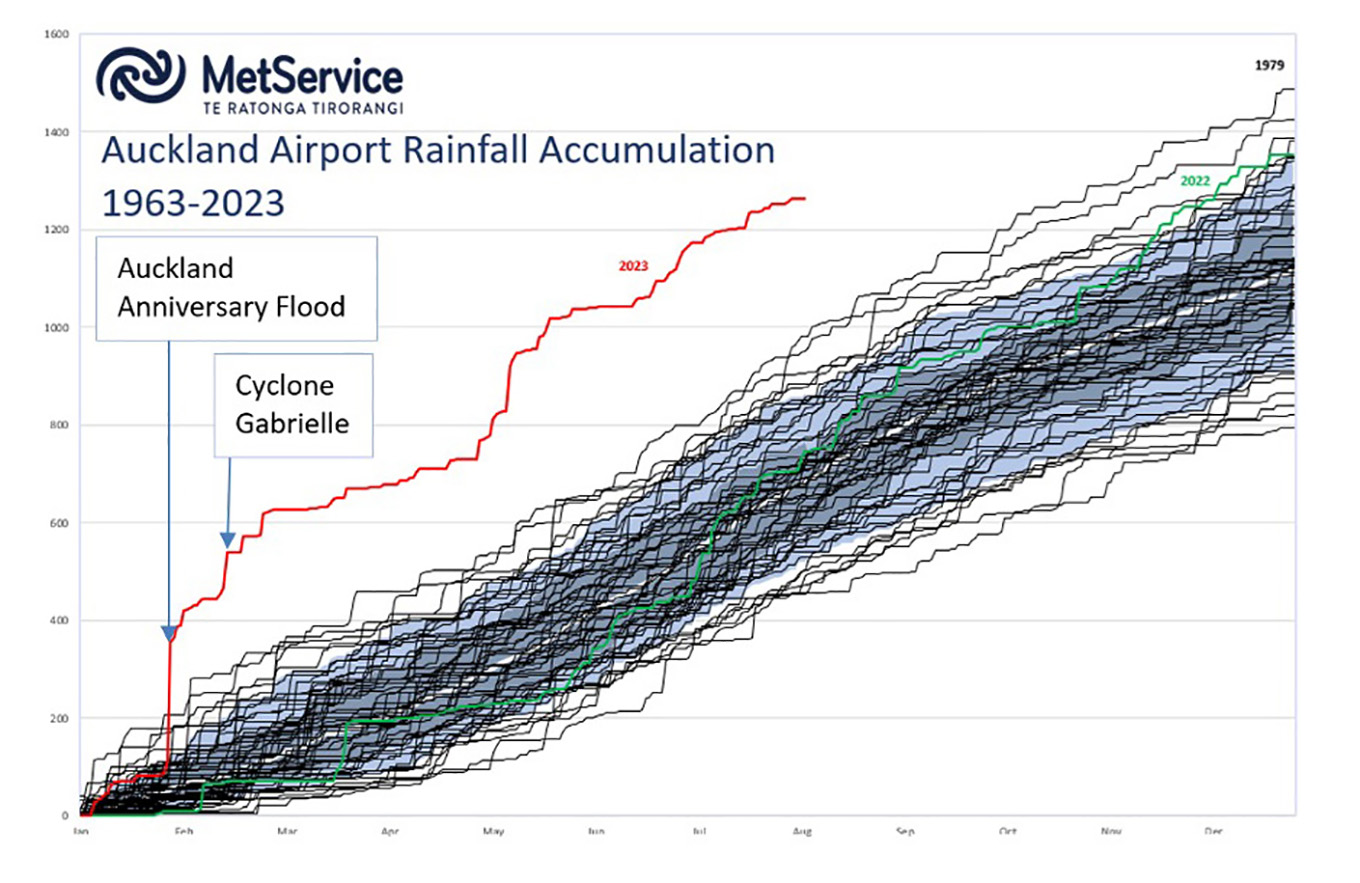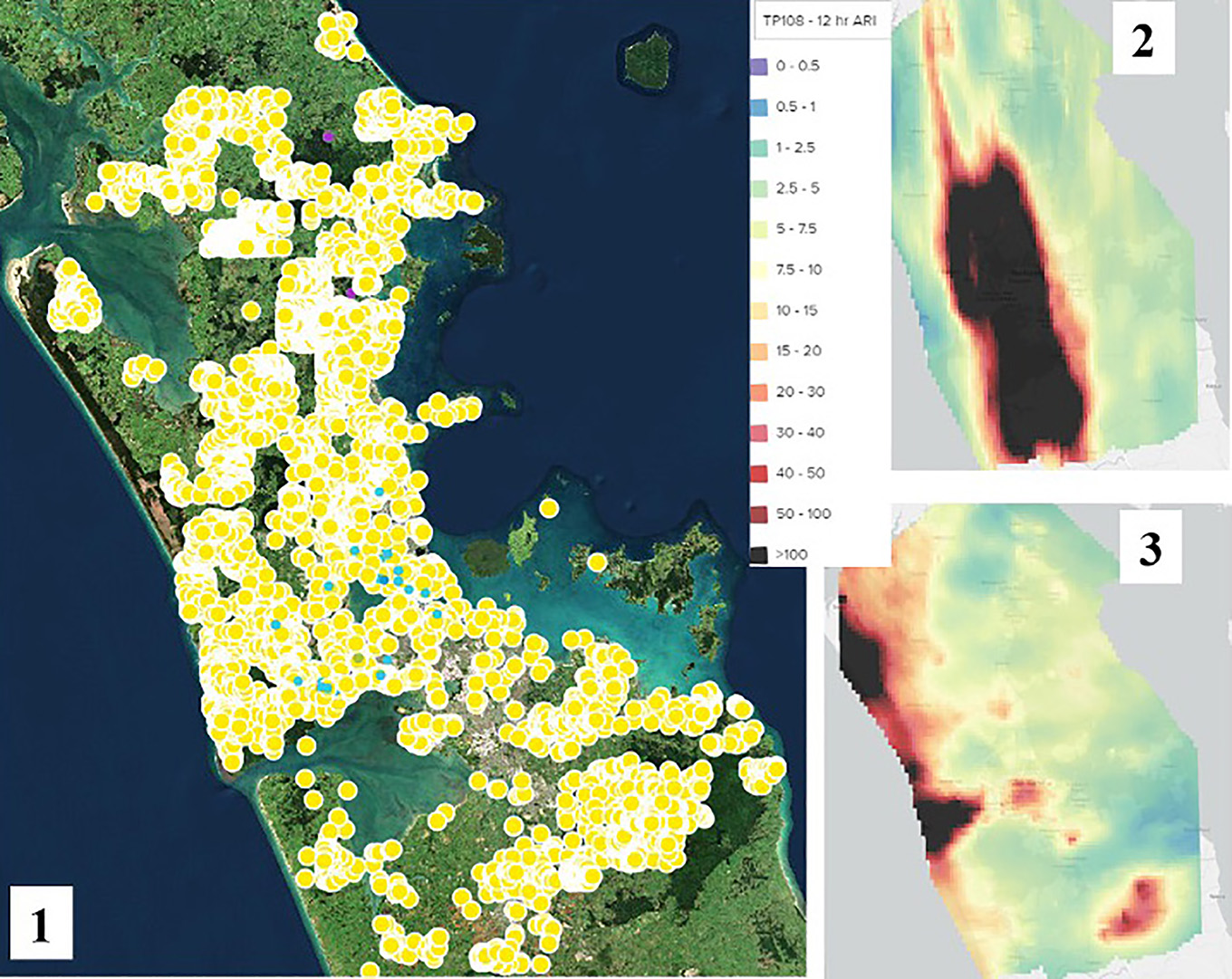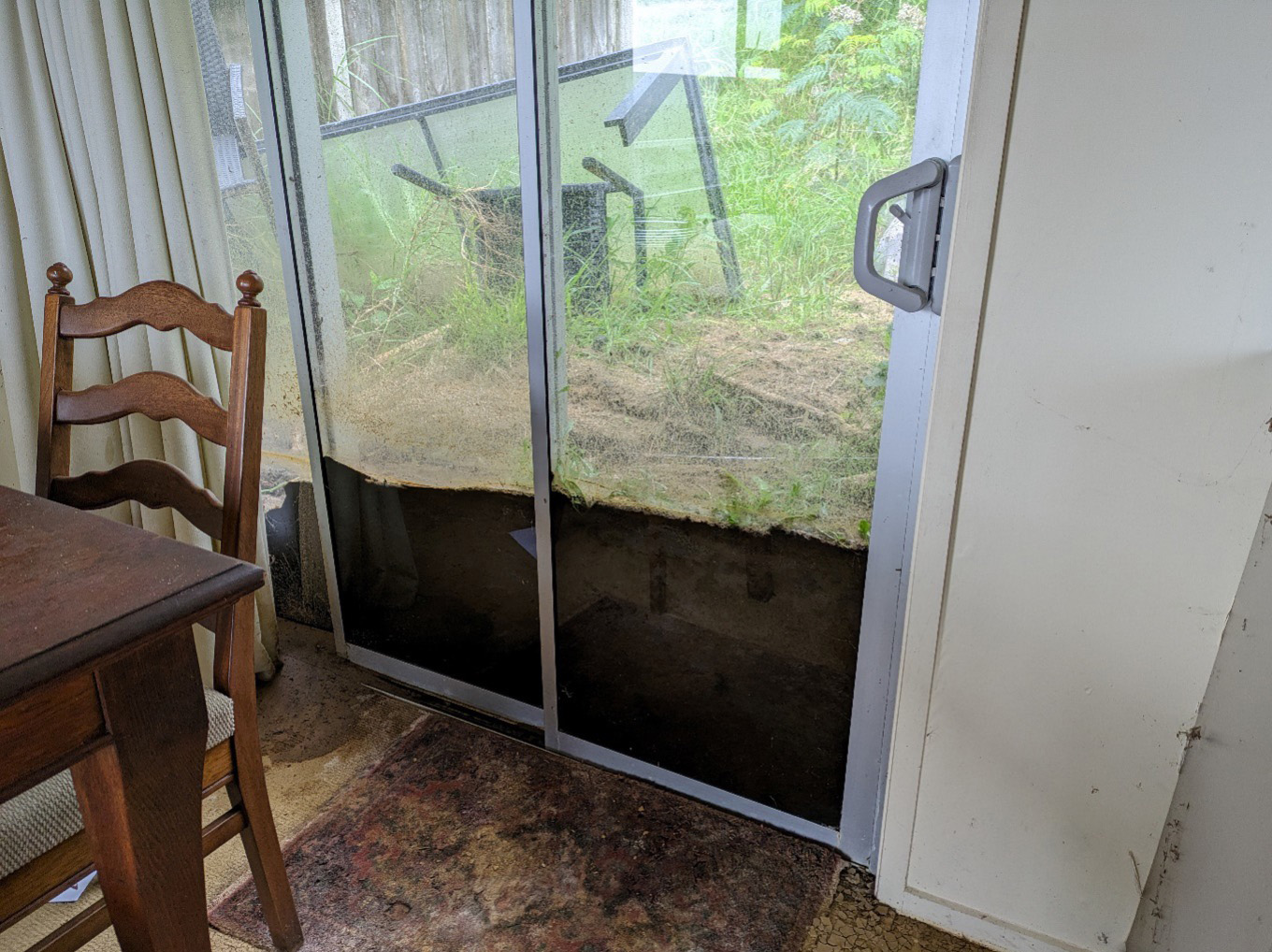In the wake of Cyclone Gabrielle and the Auckland Anniversary Floods, landslide damage extended right across the region, from Waimauku in the north, to Ramarama in the south. In some areas, the impacts were devastating.
Landslides in Auckland are commonly triggered by heavy rain. Auckland’s rainfall in 2023 was unusual, far exceeding previous records, and followed on from a very wet end to 2022 meaning that groundwater (water stored in soil and rock) was already much higher than usual which can increase the landslide risk.

Auckland Airport cumulative annual rainfall
Auckland Airport cumulative annual rainfall.
In the aftermath of the storms Auckland Council worked in partnership with GNS Science to obtain satellite imagery of the landslides, and to map them across the whole region to document the damage. Tens of thousands of landslides were mapped in Auckland. This information is critical to future planning.
“By understanding where landslides happened in the past, we can start to predict other areas where landslides might be more common and avoid building in unsuitable places,” says Head of Engineering Resilience, Ross Roberts.

Fig – Part 1 shows landslides mapped in the Auckland Region after Cyclone Gabrielle and the Auckland Anniversary Floods, showing how widely they were spread over the whole region. Parts 2 and 3 show the rainfall intensity for Auckland Anniversary Flood (2) and Cyclone Gabrielle (3). Areas in black had rainfall in excess of a 1 in 100 year event.
Fig – Part 1 shows landslides mapped in the Auckland Region after Cyclone Gabrielle and the Auckland Anniversary Floods, showing how widely they were spread over the whole region. Parts 2 and 3 show the rainfall intensity for Auckland Anniversary Flood (2) and Cyclone Gabrielle (3). Areas in black had rainfall in excess of a 1 in 100 year event.
When Government proposed the risk category framework in May 2023, council’s landslide hazard mapping expanded to include detailed expert geotechnical risk assessment at an individual property level for those that opted in to the categorisation process.
The resulting increase in geotechnical assessments across Tāmaki Makaurau has presented an enormous challenge, as it requires meticulous engineering work on a scale we’ve never seen before. The upside of this challenge is a valuable opportunity to better understand and communicate landslide hazards for our region.
“Geotechnical assessments being done under the storm recovery programme are building our understanding of the geotechnical risks associated with landslides right across Tāmaki Makaurau,” says Deputy Group Recovery Manager, Mace Ward.
“Prior to the recovery programme, landslide hazards were often not known to council unless they occurred on public land. In future, the council will be able to use new information to map landslide susceptibility across the region. The council can then make this information accessible to the public as a map of landslide hazards, alongside other hazards such as severe wind and flooding.”
Due to the nature of the landslides in the west coast area, we’ve been able to assess risks to homes in these communities in clusters, rather than individual properties. This work has been technically challenging in a landscape that continues to change.
“One of the challenges when assessing future risk in west coast communities is that the geomorphology in the area is complex. But the evidence gathered in Muriwai has been particularly useful, as it confirms that landslides can re-occur in places where they have happened previously. The land continues to change in spots where we are actively monitoring movement and new risks are appearing in some places,” says Mr Roberts. “All of this new information will feed into and inform the work we do to improve our city’s longer-term resilience."
While geotechnical assessments for categorisation are limited to registered residential properties, the results are mapped directly into the NZ Landslides Database and pooled with data being collected by GNS Science, Waka Kotahi and other organisations. This will enable us to develop a regionwide landslide susceptibility analysis and to incorporate land instability risk into upcoming changes to the Auckland Unitary Plan.
This will help prevent developments from being built in unsuitable places. While most of the homes affected in 2023 were built decades ago, it’s essential that we learn from 2023 to ensure homes built in future are less vulnerable.
Auckland Council is also supporting BRANZ and GNS Science to study homes that were damaged by landslides. This important scientific research will inform future improvements to building standards so that homes are more resilient to unexpected events.

Measuring how much debris impact homes managed to withstand in the storms will help drive improvements in building standards in the future. It’s important to understand what causes collapse, but also what homes can withstand – in this case the ranch sliders supported nearly a metre of landslide debris.
For more information on Auckland's recovery, please visit the Recovery from extreme weather and natural disasters page on the Auckland Council website and the Recovery page on OurAuckland.


